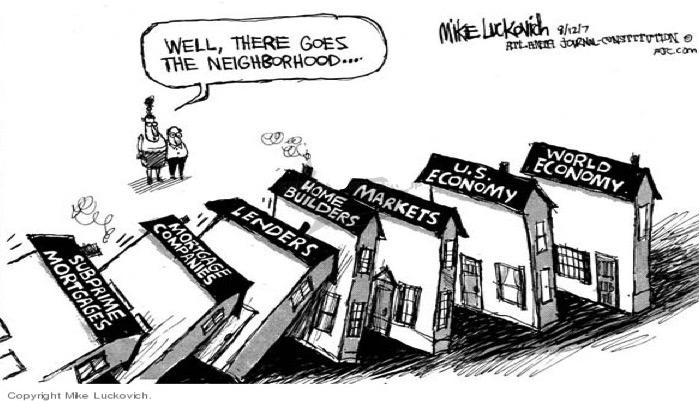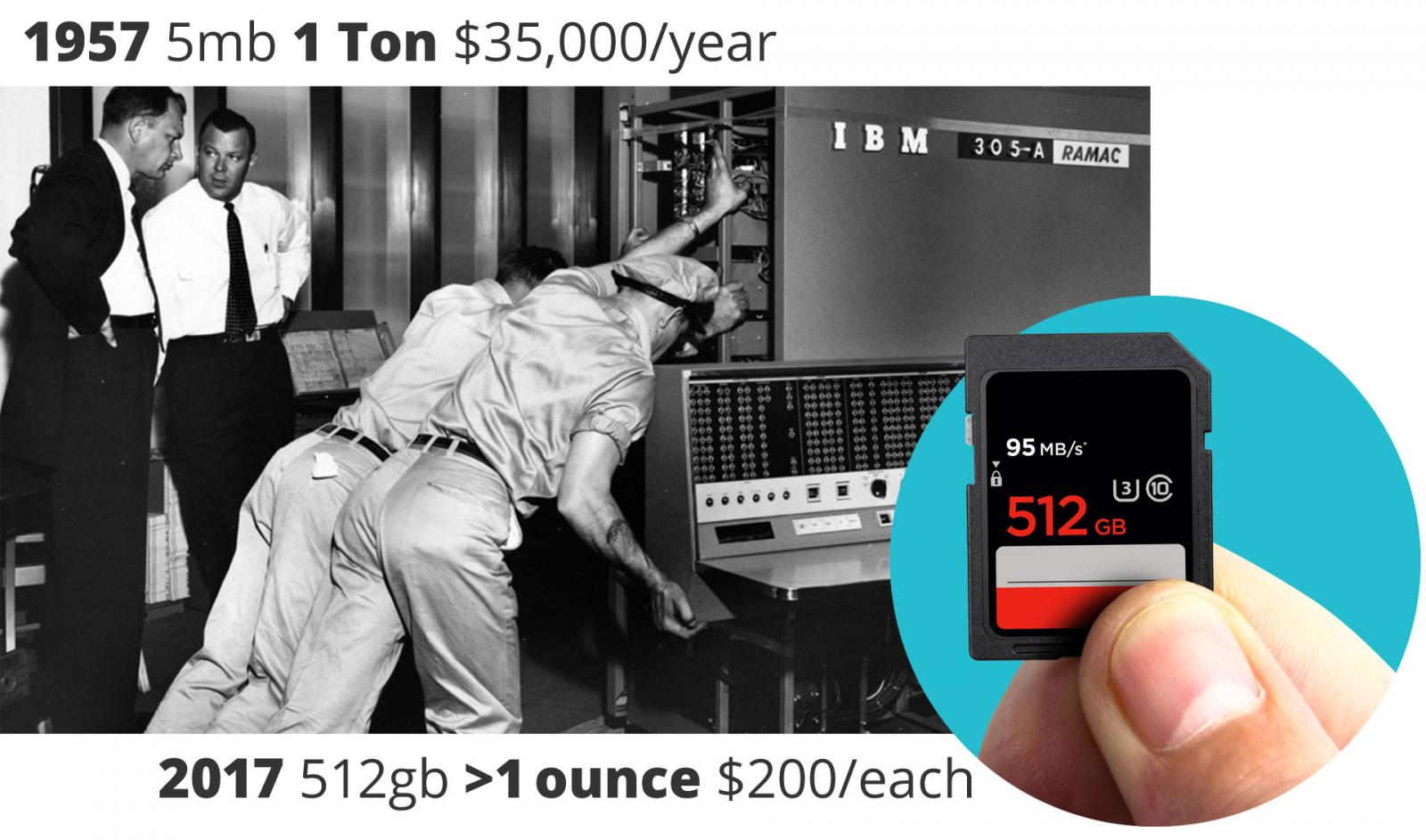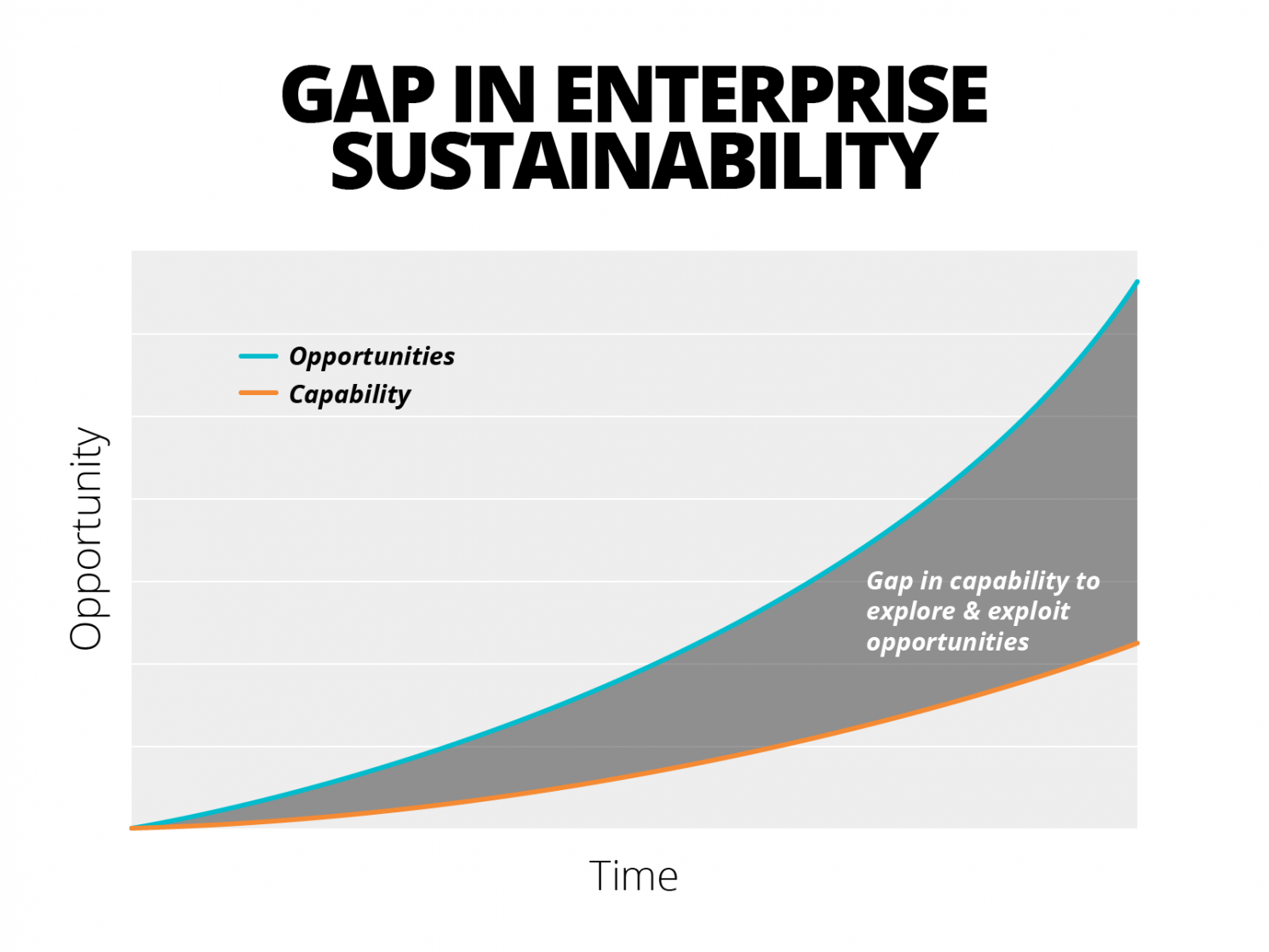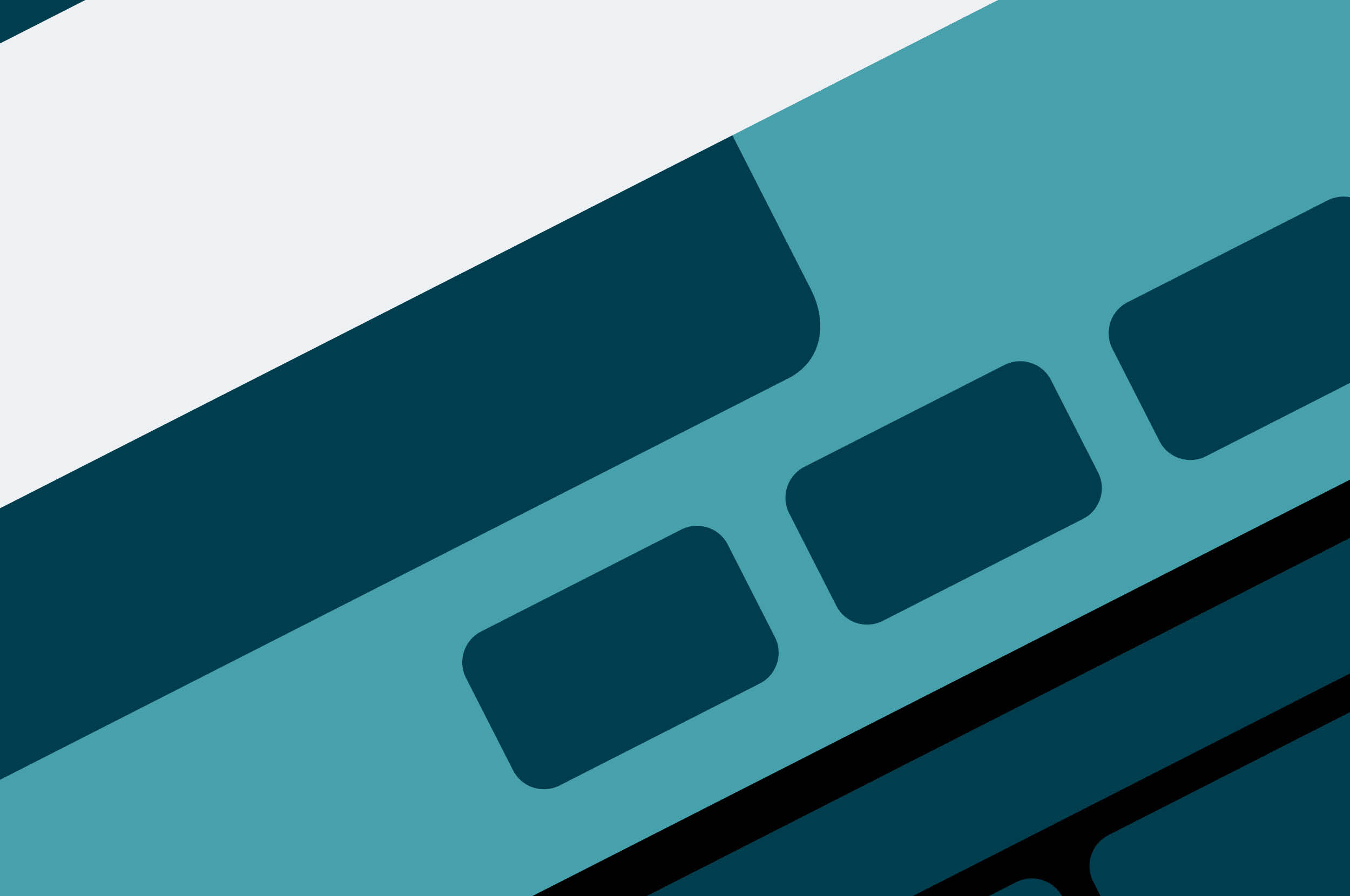
The Quick and the Dead: Leadership in the Age of Digital Complexity
Technology is moving our world at hyper speed and most businesses are scrambling to keep pace – from how they engage with customers to how they plan, respond and position for the future. Every day, leaders – whether digital natives or business veterans – wake up to a new landscape and to new decisions for which there are no precedents. How do leaders navigate this increasingly complex world?
Success in the Digital Age depends on courageous leadership, transformative thinking, and a zero-tolerance policy toward internal silos that stand in the way of speed and agility. Because business-as-usual will be out of business within five years.
There has never been a time - in recent memory - when there was more pressure on executives to come up with new approaches to corporate strategy. Why? Because we’re living in the age of rapid, relentless change, with increasing volatility – economically, socially, politically, technologically.
But before we explore too much of the 'now', let’s back up to a simpler time.
Traditional corporate strategies are based on an implicit acceptance of traditional economic theories, the foundations for which were put forward in 1776 by Adam Smith in “The Wealth of Nations”. While Smith clearly got a lot right in his unprecedented economic treatise, the passage of time has exposed a few significant flaws.
One of Adam Smith’s foundational assumptions was that human beings, when acting in the marketplace, would make rational decisions in their own self-interest. We now know from behavioral economics that people make irrational decisions all the time. Confirmation bias, loss aversion, availability bias, and sunk cost fallacy are just a few ways consumers make consistently confounding decisions that impact market price, resource allocation, and our economy.
Another foundational assumption was Smith’s famous 'invisible hand'; the unobservable market force that would help the demand and supply of goods in a free market to reach equilibrium automatically, rolling them up to the benefit of society generally.
And yet here we are in 2017, with the impacts of the Global Financial Crisis of 2008-2009 still reverberating through our political and economic systems. It was people’s decisions in their own self-interest, when rolled up by the 'invisible hand', that turned out to be catastrophic at the aggregate level.

Image Credit: Mike Luckovich
And while 2008 is one of the most extreme recent examples, it’s worth remembering that economic crises are not so uncommon. The last 200 years or so have been replete with periodic economic crises; indeed there have been several major economic recessions and financial crises in countries around the world in just the last 20 years alone.And then, there is the technology factor. Among the many changes in modern society, technology is probably the one changing the fastest and having the greatest global impact across demographics and and industries. Think of it as the equal-opportunity disruptor. Just consider how these have impacted the world in just the last few years: Smart phones. Apps. Google. Amazon. Apple. Facebook. Twitter. Instagram. Airbnb. Uber and Lyft. Wearables. IoT. Smart homes, smart appliances and smart cars. Drones delivering supplies to hospitals and homes. Autonomous cars and trucks. Robots making surgery more precise and less invasive. Brain Computer Interface that allows direct communication between your brain and computers. Machine Learning algorithms powering voice interface and virtual assistants like Siri and Alexa. 3D printers producing everything from clothing to prosthetic limbs.
Technological change is so fast, so disruptive, the Davos World Economic Forum has dubbed it The Fourth Industrial Revolution. Professor Klaus Schwab, founder and executive chair of the World Economic Forum, argues that the early 21st century is witnessing a set of economic changes of major historical importance characterized by:
- a much more ubiquitous and mobile internet
- smaller, more powerful and cheaper sensors
- artificial intelligence and machine learning
Let’s look at the speed of this change.
Our entire modern history of humanity - 150,000 years or so - has been one of linear, incremental change. We are all products of linear businesses engaged mostly in linear business growth. But technology is not growing in a straight path, it’s growing exponentially. What does exponential growth look like?
Consider the IBM 305 Ramac. It was the first computer with a hard disk drive, released in 1956. The hard drive stored a whopping 5MB of data and weighed more than a ton. A company could lease it for $35,000 per year - about $318,000 today. Now, you can pick up a 512GB Sandisk memory card for around $300. That’s 100,000 times more storage and it fits in the tiny pocket of your jeans.

That’s typical of the trends we’re seeing:
- Storage costs have fallen radically over the last 20 years thanks to large-scale cloud storage. The the cost per GB of storage has dropped from $600 in the early 90’s to just a few cents today
- In a 12 year period the price of bandwidth has fallen by 99%
- Over the last 20 years, the cost for 1 million transistors dropped from $200 to just a few cents

For corporations, the challenge is the ever-widening gap between the exponential growth of technology-driven market opportunities and the linear progress we’re capable of achieving within traditional organizations.
Closing this gap requires new ways of thinking and working. It requires a shift from a mindset of sustained competitive advantage, to one of limited transient advantage. It requires a mindset and culture of rapid experimentation, learning, and adjustment.
Yet how many organizations can truly say that they are capable of achieving this? Indeed, how many companies are there where an MVP (minimum viable product) still costs several million dollars and takes takes 12 to 18 months to release. (Hint: quite a few!) That is not sustainable. You might as well stand still.
So what can you do to change how you work in this new digital world?
Unleash Your Technologists
When we talk about cloud based web services, we often focus on the best benefit - that it’s cheaper to run your applications on the cloud than owning your own infrastructure.What’s often overlooked is the bigger impact to technologists – the flexibility and freedom it brings. It allows technologists to create a new computing environment on demand at real time – to try out new ideas at a much faster pace.
Cloud platforms are just one of the ways to remove friction from engineering teams. There are many other tools and techniques available like test automation and DevOps. Another critical aspect is to expose core digital assets through APIs across the organization. Give technologists full access to data and functionalities beyond organizational boundaries.
Once empowered, we will all be surprised by how much creativity and innovation technologists can drive to unlock your business potential. This concept is often called the 'Digital Platform'.
Involve the Customer
We’re all in the business of creating value for our customers, but it’s easy to lose sight of that – especially after startups become large and successful, or when legacy brands scramble to maintain relevance in a changing market. Slowly, or suddenly, the focus shifts from customers to investors and shareholders and expansion and a million other things.We recently worked with a group of executives from an automotive brand famous for engineering excellence. They told us, “We’re very proud of our deep engineering culture to build the best cars in the world with the best quality – but sometimes our people forget that our customers should like it too – until it’s too late”.
We know customers are sometimes difficult. Their expectations can seem unreasonable and their loyalty fickle. And as we noted earlier, they often behave in irrational ways. So we can’t assume that we know what the customers want. When we experiment, we have to make sure our customers are involved. We have to engage them. As one of our Thoughtworks colleagues, Neil Redding, rightly points out, we have to “interact or die trying.”
We can’t simply rely on traditional market research or focus groups. The best way to do that is to get out of the office and work with customers directly. The good news is that we have the ability to do this with real time product through Continuous Delivery and iterative development. How?
Release Early. Update Frequently.
Very often the experimentation and change are slowed by an organizational fear of releasing anything that isn’t 'perfect'. Perfection is the enemy of productivity.
Yes, we all have big, important brands to protect. But we have to honestly ask ourselves: what is the greater risk? The risk of getting it wrong, or the risk of simply ceasing to be relevant altogether?
Perhaps we can take comfort in the companies included in Interbrand’s best global brand list - for example, Apple, Google, Amazon, Facebook, Samsung, all of which are defined by their rapid iteration and experiments. Sure, many of their experiments haven’t always succeeded; in fact, some have endured some very public fails. But overall they don’t appear to be doing so bad.
The point is, try more, learn faster, and try again.
Kill Your IT Department
Most companies were designed for mass production focusing on standardization, specialization, hierarchy, compliance, and efficiency. Rinse and repeat. But the modern organization is all about autonomy, rapid experimentation, and innovation. Traditional departmental boundaries just get in the way. Technology companies, or at least tech-driven companies, do not delegate and segregate tech to a department.In technology companies, everyone works together to solve problems collaboratively and iteratively. Instead of competitive silos they work in cross-functional teams - business stakeholders, marketing, product, operation, designers and engineers - all focused on a single market objective or a product vision.
Killing the IT department means breaking down the departmental walls and get everyone working together. It’s going to require a fundamental culture shift. A transformation.
Of course, transformation isn’t easy. As our Thoughtworks colleague Gary O’Brien, reminds us, “the word ‘transformation’ has become one of the most clichéd terms in the business world. It’s a word used to signal change … the problem is that change doesn't come solely from a strategy, a method, a process adjustment or change-management propaganda. Truly impactful and sustainable change comes from the passion of people at all levels. Passion for what your business does and stands for; passion to achieve the outcome to drive the business forward successfully”.
We couldn't agree more.
Want more? Read on.
1. Technology Radar Volume 16 - We publish our Technology Radar twice a year: a snapshot of the major technologies and trends that glean from our work, partnering on our clients' most ambitious projects. Themes for this Radar include: Conversational UI And Natural Language Processing, Intelligence As A Service, Developer Experience As The New Differentiator, The Rise Of Platforms, and Pervasive Python.2. Do You Have What It Takes To Transform? by Gary O’Brien, Principal Consultant and Organizational Designer - The word “transformation” is fast becoming one of the most clichéd terms in the business world. The problem is that change doesn't come solely from a strategy, a method, a process adjustment or change-management propaganda.
3. Interact or Die Trying by Neil Redding, Director Emerging Technology - Be assured that whatever your business is, your customers will leave you for your competitors if they make it easier and more fun to interact with them. Without hesitation. The good news is that this disruptor can be you.
4. The Art of Platform Thinking by Amit Kaul, VP of Emerging Technology and Ryan Murray, Digital Platform Strategy - The digitally-savvy customer has highly sophisticated - and ever-evolving - expectations for engagement and brand experience at every touchpoint. Delivering on and keeping up with these expectations requires an innovation-driven culture with customer value at it’s center. Platform thinking can help free your organization up to be more innovative without adding additional debt such as inventory, real estate, divisions, and staff.
Disclaimer: The statements and opinions expressed in this article are those of the author(s) and do not necessarily reflect the positions of Thoughtworks.

















